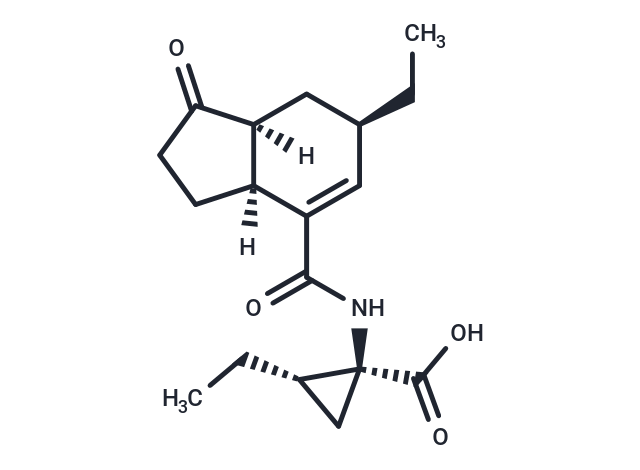Shopping Cart
Remove All Your shopping cart is currently empty
Your shopping cart is currently empty
Coronatine is a toxin and plant growth regulator produced by a bacterium, Pseudomonas syringae, which is structurally similar to jasmonic acid and is able to bind and activate the jasmonic acid receptor, COI1, to inhibit salicylic acid-dependent defense responses; it is also able to promote bacterial invasion and reproduction through stomata.

| Pack Size | Price | USA Warehouse | Global Warehouse | Quantity |
|---|---|---|---|---|
| 1 mg | $396 | - | In Stock |
| Description | Coronatine is a toxin and plant growth regulator produced by a bacterium, Pseudomonas syringae, which is structurally similar to jasmonic acid and is able to bind and activate the jasmonic acid receptor, COI1, to inhibit salicylic acid-dependent defense responses; it is also able to promote bacterial invasion and reproduction through stomata. |
| In vitro | Methods: Plants were grown on vertical MS plates for 12 days and then transferred to MS plates containing ABA (5 μM) and coronatine (1 μM) or no other chemicals as controls. Rosette leaves were collected 24 hours later for RNA extraction. Results: Coronatine induced the expression of NAC transcription factor genes (ANAC019, ANAC055, and ANAC072), inhibited abscisic acid-induced stomatal closure, promoted stomatal reopening, and inhibited the accumulation of salicylic acid, thereby weakening the plant's immune response. [1] |
| Molecular Weight | 319.4 |
| Formula | C18H25NO4 |
| Cas No. | 62251-96-1 |
| Smiles | N(C(=O)C=1[C@@]2([C@](C[C@@H](CC)C1)(C(=O)CC2)[H])[H])[C@]3(C(O)=O)[C@@H](CC)C3 |
| Color | White |
| Appearance | Solid |
| Storage | keep away from moisture | Powder: -20°C for 3 years | In solvent: -80°C for 1 year | Shipping with blue ice/Shipping at ambient temperature. |
| Size | Quantity | Unit Price | Amount | Operation |
|---|

Copyright © 2015-2025 TargetMol Chemicals Inc. All Rights Reserved.